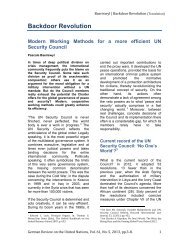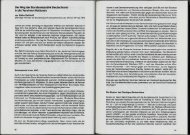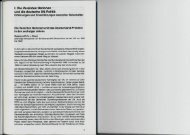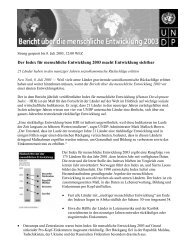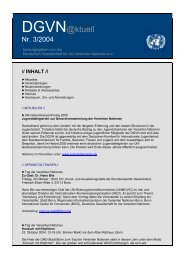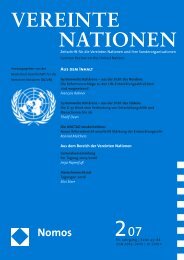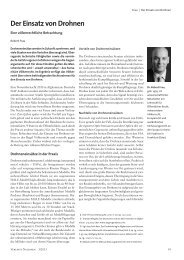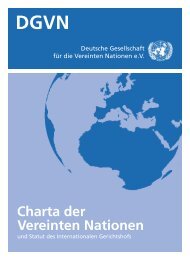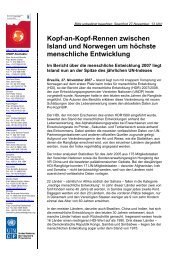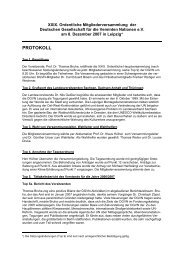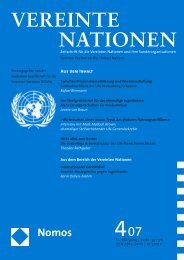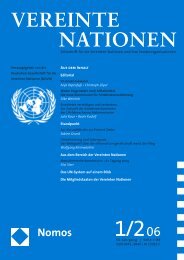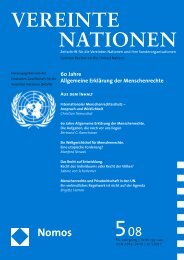One Ocean, Many Worlds of Life - Convention on Biological Diversity
One Ocean, Many Worlds of Life - Convention on Biological Diversity
One Ocean, Many Worlds of Life - Convention on Biological Diversity
You also want an ePaper? Increase the reach of your titles
YUMPU automatically turns print PDFs into web optimized ePapers that Google loves.
flickr/nih<strong>on</strong>bunka<br />
C<strong>on</strong>sumers have the power to change the industry<br />
by making informed and resp<strong>on</strong>sible choices<br />
in the prey they capture, bottom trawls can have devastating impacts <strong>on</strong><br />
seafloor habitat, as they grind over, knock down and crush everything<br />
in their path. Pictures <str<strong>on</strong>g>of</str<strong>on</strong>g> seabed that initially show vibrant communities<br />
<str<strong>on</strong>g>of</str<strong>on</strong>g> plants and animals reveal, in the aftermath <str<strong>on</strong>g>of</str<strong>on</strong>g> a bottom trawl’s passage<br />
through the area, a veritable marine desert. So complete is the destructi<strong>on</strong><br />
wrought by bottom trawling that it is variously referred to as “clearcutting<br />
the ocean” and “stripmining the sea.” At particular risk are deep-sea corals,<br />
which grow <strong>on</strong> seamounts and which, because <str<strong>on</strong>g>of</str<strong>on</strong>g> their excepti<strong>on</strong>ally l<strong>on</strong>g<br />
lives and very slow growth rates (generally in the regi<strong>on</strong> <str<strong>on</strong>g>of</str<strong>on</strong>g> 1 mm a year)<br />
cannot easily rebound from damage.<br />
Indeed, as commercial fisheries increasingly turn their attenti<strong>on</strong>s to the deep<br />
sea, the risk <str<strong>on</strong>g>of</str<strong>on</strong>g> causing severe damage to populati<strong>on</strong>s <str<strong>on</strong>g>of</str<strong>on</strong>g> fish and other marine<br />
life that frequently live <strong>on</strong> the fringes <str<strong>on</strong>g>of</str<strong>on</strong>g> existence, is dangerously high, in<br />
the cold and dark. For example, Harris<strong>on</strong>’s dogfish, a species endemic to the<br />
deep waters <str<strong>on</strong>g>of</str<strong>on</strong>g>f Australia, declined by 99 percent over 20 years from 1976 as<br />
a result <str<strong>on</strong>g>of</str<strong>on</strong>g> trawl fishing and is now regarded as critically endangered. Orange<br />
roughy, a large fish that lives near seamounts, grows slowly, can live 100 years<br />
and has a very low natural mortality rate, has in recent years been subject<br />
to trawl fisheries that have seen catches rise and then plummet <str<strong>on</strong>g>of</str<strong>on</strong>g>f Chile,<br />
Namibia, Australia, New Zealand and elsewhere, <str<strong>on</strong>g>of</str<strong>on</strong>g>ten after <strong>on</strong>ly a decade<br />
or so <str<strong>on</strong>g>of</str<strong>on</strong>g> fishing.63 As with cold-water corals, the very slow reproducti<strong>on</strong><br />
<str<strong>on</strong>g>One</str<strong>on</strong>g> <str<strong>on</strong>g>Ocean</str<strong>on</strong>g>, <str<strong>on</strong>g>Many</str<strong>on</strong>g> WOrlds Of life<br />
43



